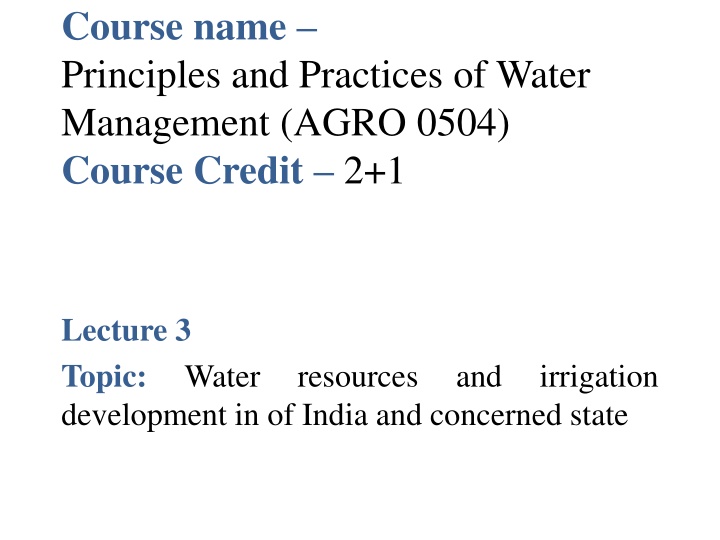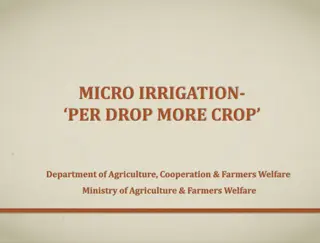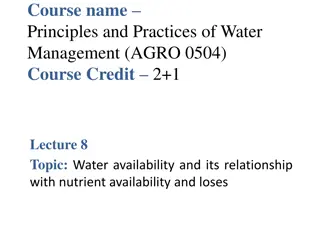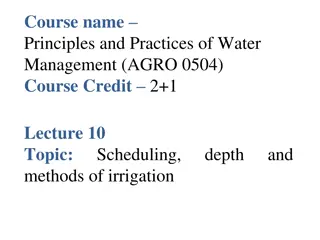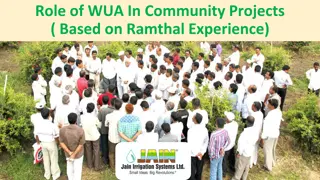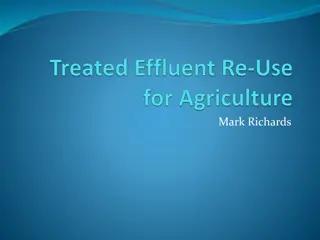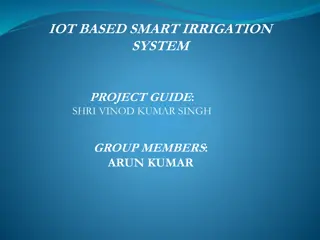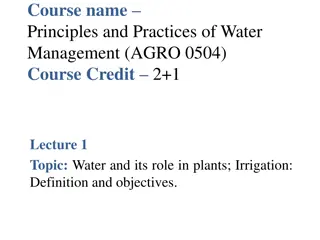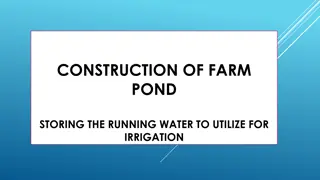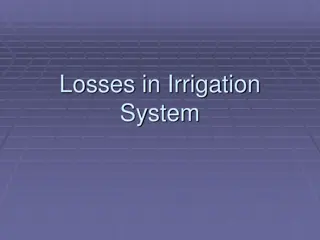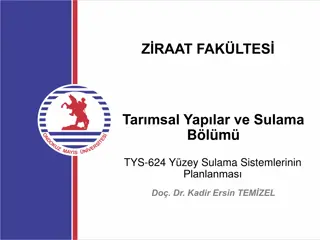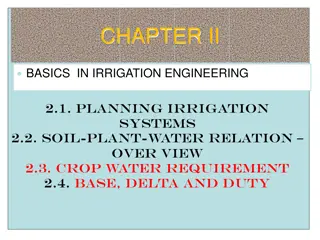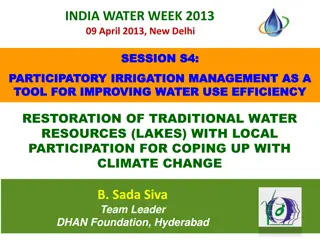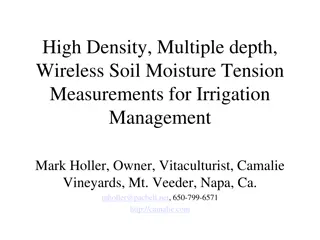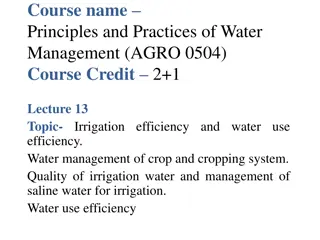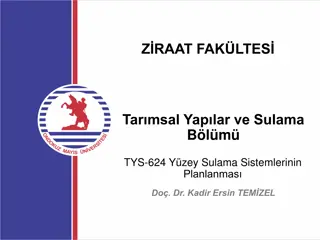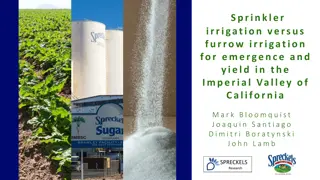Principles and Practices of Water Management in India: Irrigation Projects and Methods
This course delves into the principles and practices of water management in India, focusing on water resources, irrigation sources, major, minor, and medium irrigation projects, and various irrigation methods adopted in the country. It covers the classification of irrigation projects based on coverage area and irrigation method, as well as the types of irrigation schemes based on the way of water application such as direct and indirect methods.
Download Presentation

Please find below an Image/Link to download the presentation.
The content on the website is provided AS IS for your information and personal use only. It may not be sold, licensed, or shared on other websites without obtaining consent from the author.If you encounter any issues during the download, it is possible that the publisher has removed the file from their server.
You are allowed to download the files provided on this website for personal or commercial use, subject to the condition that they are used lawfully. All files are the property of their respective owners.
The content on the website is provided AS IS for your information and personal use only. It may not be sold, licensed, or shared on other websites without obtaining consent from the author.
E N D
Presentation Transcript
Course name Principles and Practices of Water Management (AGRO 0504) Course Credit 2+1 Lecture 3 Topic: development in of India and concerned state Water resources and irrigation
water resource of India Precipitation Atmosphere water other than precipitation Ground water Flood Reservoir
Irrigation sources Surface water Ground water
Major , minor and medium irrigation projects
Major Irrigation Projects: The area envisaged to be covered under irrigation is of the order over 10000 hectare (CCA>10,000 ha). This type of project consist huge storage reservoirs, flow diversion structures and a large network of canals. These are often multi-purpose projects serving other aspects like flood control and hydro power. Medium Irrigation Projects: Projects having CCA less than 10,000 ha but more than 2,000 ha are classified as medium irrigation projects. These are also multi-purpose surface water projects. Medium size storage, diversion and distribution structures are the main components of this type of project. Minor Irrigation Projects: Projects having CCA less than or equal to 2,000 ha are termed as minor irrigation project. The main sources of water are tanks, small reservoirs and groundwater pumping. A number of minor irrigation projects may exist individually within the command area of a major or medium irrigation project.
The Major and Medium Irrigation (MMI) projects are further classified into two types based on irrigation method adopted. Direct Irrigation method: In this method water is directly diverted from the river into the canal by the construction of a diversion structure like weir or barrage across the stream without attempting to store water. This method is practiced where the stream has adequate perennial supply. Direct irrigation is usually practiced in deltaic tracts that is, in areas having even and plane topography. Indirect or Storage Irrigation Method: In this system, water is stored in a reservoir during monsoon by construction of a dam across the river. The stored water is diverted to the fields through a network of canals during the dry period. Evidently indirect irrigation is adopted where the river is not perennial or flow in the river is inadequate during lean period.
Based on the Way of Water Application The Irrigation schemes are classified into two types based on way of water application. Gravity/Flow Irrigation Scheme: This is the type of irrigation system in which water is stored at a higher elevation so as to enable supply to the land by gravity flow. Such irrigation schemes consists head works across river to store the water and canal network to distribute the water. The gravity irrigation scheme is further classified as: Perennial Irrigation Scheme: In this scheme assured supply of water is made available to the command area throughout the crop period to meet irrigation requirement of the crops. Non-Perennial Irrigation (Restricted Irrigation) Scheme: Canal supply is generally made available in non-monsoon period from the storage. Lift Irrigation Scheme: Irrigation systems in which water has to be pumped to the field or canal network form lower elevations are categorised as lift irrigation schemes.
